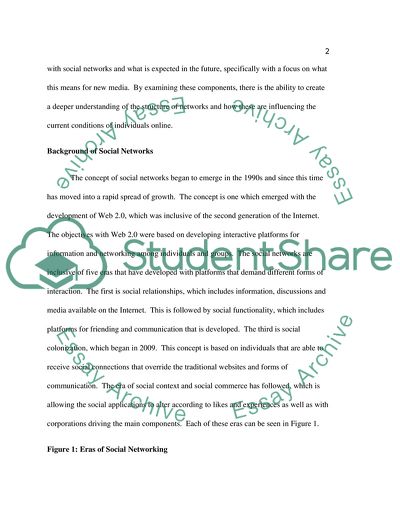Cite this document
(The New Forms of Communication and Social Networking Case Study Example | Topics and Well Written Essays - 3000 words, n.d.)
The New Forms of Communication and Social Networking Case Study Example | Topics and Well Written Essays - 3000 words. https://studentshare.org/journalism-communication/1754633-social-networks-as-a-new-media-of-communication-are-they-more-persuasive-than-traditional-forms-of-communication-especially-in-regards-to-changing-attitudes-of-individuals-towards-key-debates
The New Forms of Communication and Social Networking Case Study Example | Topics and Well Written Essays - 3000 words. https://studentshare.org/journalism-communication/1754633-social-networks-as-a-new-media-of-communication-are-they-more-persuasive-than-traditional-forms-of-communication-especially-in-regards-to-changing-attitudes-of-individuals-towards-key-debates
(The New Forms of Communication and Social Networking Case Study Example | Topics and Well Written Essays - 3000 Words)
The New Forms of Communication and Social Networking Case Study Example | Topics and Well Written Essays - 3000 Words. https://studentshare.org/journalism-communication/1754633-social-networks-as-a-new-media-of-communication-are-they-more-persuasive-than-traditional-forms-of-communication-especially-in-regards-to-changing-attitudes-of-individuals-towards-key-debates.
The New Forms of Communication and Social Networking Case Study Example | Topics and Well Written Essays - 3000 Words. https://studentshare.org/journalism-communication/1754633-social-networks-as-a-new-media-of-communication-are-they-more-persuasive-than-traditional-forms-of-communication-especially-in-regards-to-changing-attitudes-of-individuals-towards-key-debates.
“The New Forms of Communication and Social Networking Case Study Example | Topics and Well Written Essays - 3000 Words”. https://studentshare.org/journalism-communication/1754633-social-networks-as-a-new-media-of-communication-are-they-more-persuasive-than-traditional-forms-of-communication-especially-in-regards-to-changing-attitudes-of-individuals-towards-key-debates.


